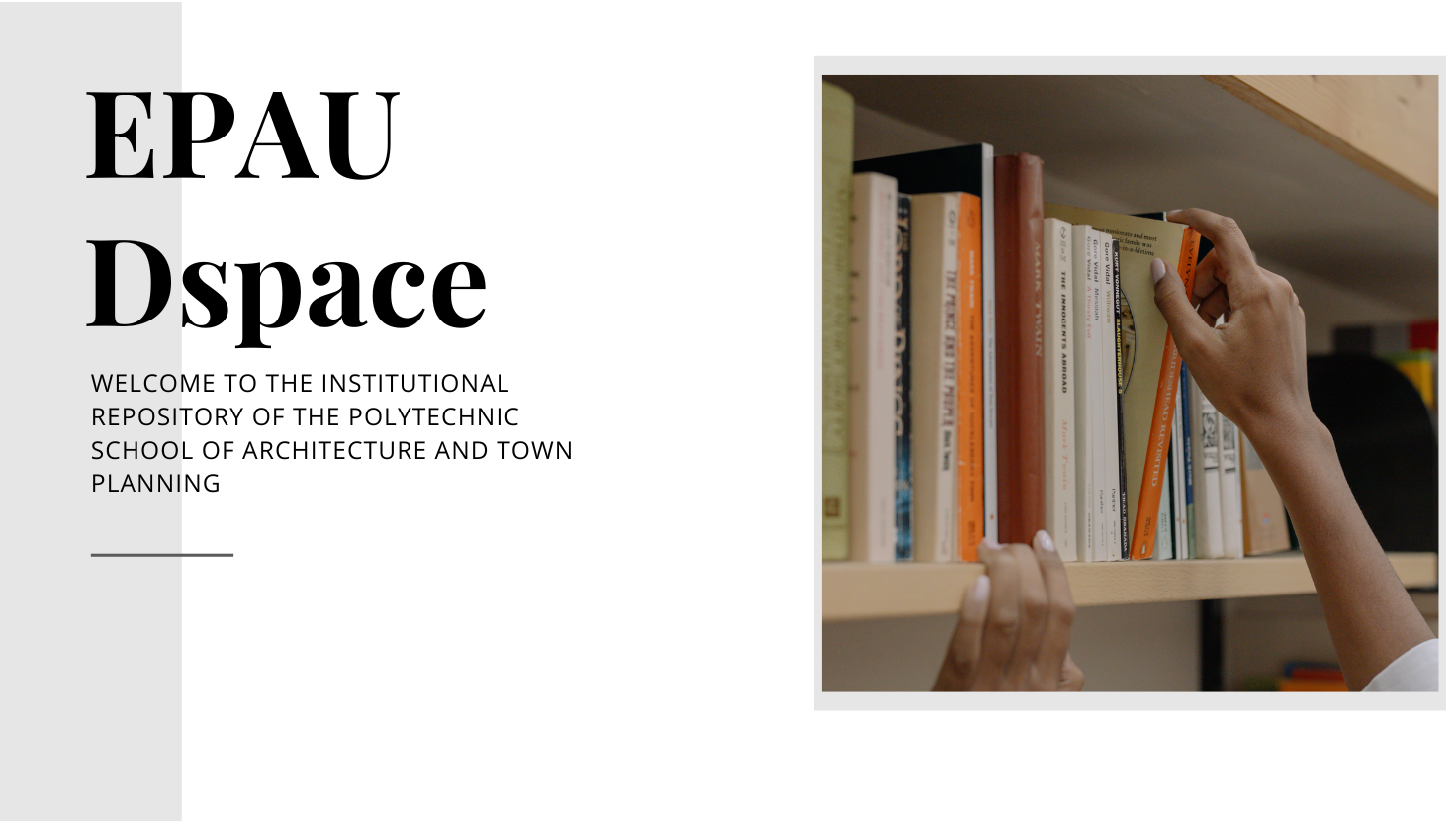Communities in DSpace
Select a community to browse its collections.
Recent Submissions
Pour une " requalification " des espaces communautaires dans l'habitat collectif Cas d'etude : les cités du Plateau des Annassers
(Epau, 2001) BENDANI-OULMANE, Nabila.; KASSAB -BABA AHMED, Tsouria [Rapporteur].
Techniques industrialisees et cadre bâti en Algérie Pour de nouvelles approches qualitatives
(Epau, 1986) AMAROUAYACHE, Mohamed; TREBBI,G [Rapporteur] | MANCUSO,F [Co-Rapporteur].
Les Villes Algeriennes au Moyen Age VII - XVeme Siecle Bone -Cherchell-Constantine -Tebessa -Telemcen
(Epau, 1986) TALEB,Salima; VENTURI, M [Rapporteur]
Usage, pratique et rôle social des places publiques Cas d'études - ville de Béjaia
(Epau, 1999) OUSSADOU LAHACANI, Khadidja; BENYOUCEF, Brahim [Rapporteur].
Croissance urbaine Processus et formes d'urbanisation d'une oasis, cas de Laghouat
(Epau, 2000) OTHMANI MARABOUT,Zahra; BENYOUCEF, Brahim [Rapporteur].

